A Substitutive Coefficients Network for the Modelling of Thermal Systems: A Mono-Zone Building Case Study
Abstract
1. Introduction
2. Methodology
2.1. Lumped Capacitance Models
2.2. Alternative SCN Model
3. Mono-Zone Building Case Study
- Thermal bridges are neglected,
- Thermal impedance between the nodes on the same level is neglected,
- Indoor air temperature is assumed uniform,
- Indoor air velocity is assumed very low,
- Contact impedance is neglected,
- Reference temperature is taken as the external ambient one.
4. Numerical Simulation
4.1. Numerical Scheme
4.2. Model Adjustment
5. Results and Discussion
6. Conclusions
Author Contributions
Funding
Institutional Review Board Statement
Informed Consent Statement
Data Availability Statement
Acknowledgments
Conflicts of Interest
Nomenclature
| The state matrix | |
| The input matrix associated to the power supply | |
| The input matrix associated to the advection | |
| The disturbance matrix associated to the ambient temperature | |
| The disturbance matrix associated to the solar radiation | |
| (W/m² K) heat transfer coefficient by convection in x = L. | |
| (W/m² K) heat transfer coefficient by convection in x = 0. | |
| The dimensionless power supply | |
| The dimensionless parameters set | |
| The external state parameter | |
| The proper state parameter | |
| The dimensionless source term | |
| The dimensionless velocity | |
| (W/m² K) The inputted global heat transfer coefficient | |
| (W/m² K) The proper global heat transfer coefficient | |
| (W/m² K) The outputted global heat transfer coefficient | |
| The thermal thin layer coefficient | |
| The dimensionless temperature | |
| The dimensionless spatial axis | |
| The general Biot criterion coefficient | |
| The heat flux density (W/m²) |
Appendix A. Sub-Matrices
Appendix B. State Matrix
Appendix C. Other State Equation Components
Appendix D. Dimensionless Sub-Parameters
- For the wall
- For the roof
- For the window
- For the door
- For the floorwhere S leads to the area of the sub-components.
Appendix E. Other Parameters
- For the wall
- For the roof
- For the window
- For the door
- For the floor
Appendix F. Supplementary Figures: The Building Plans
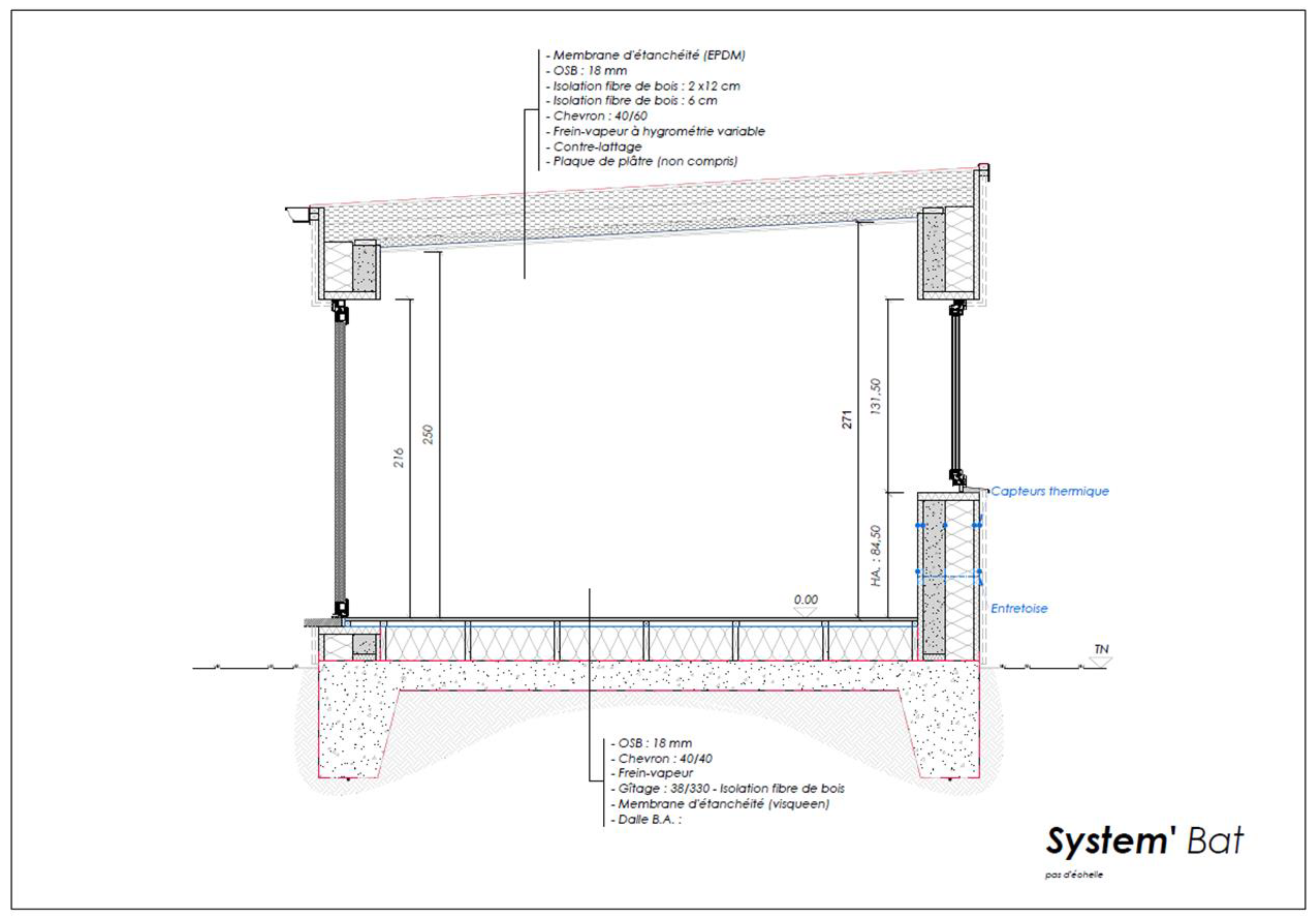
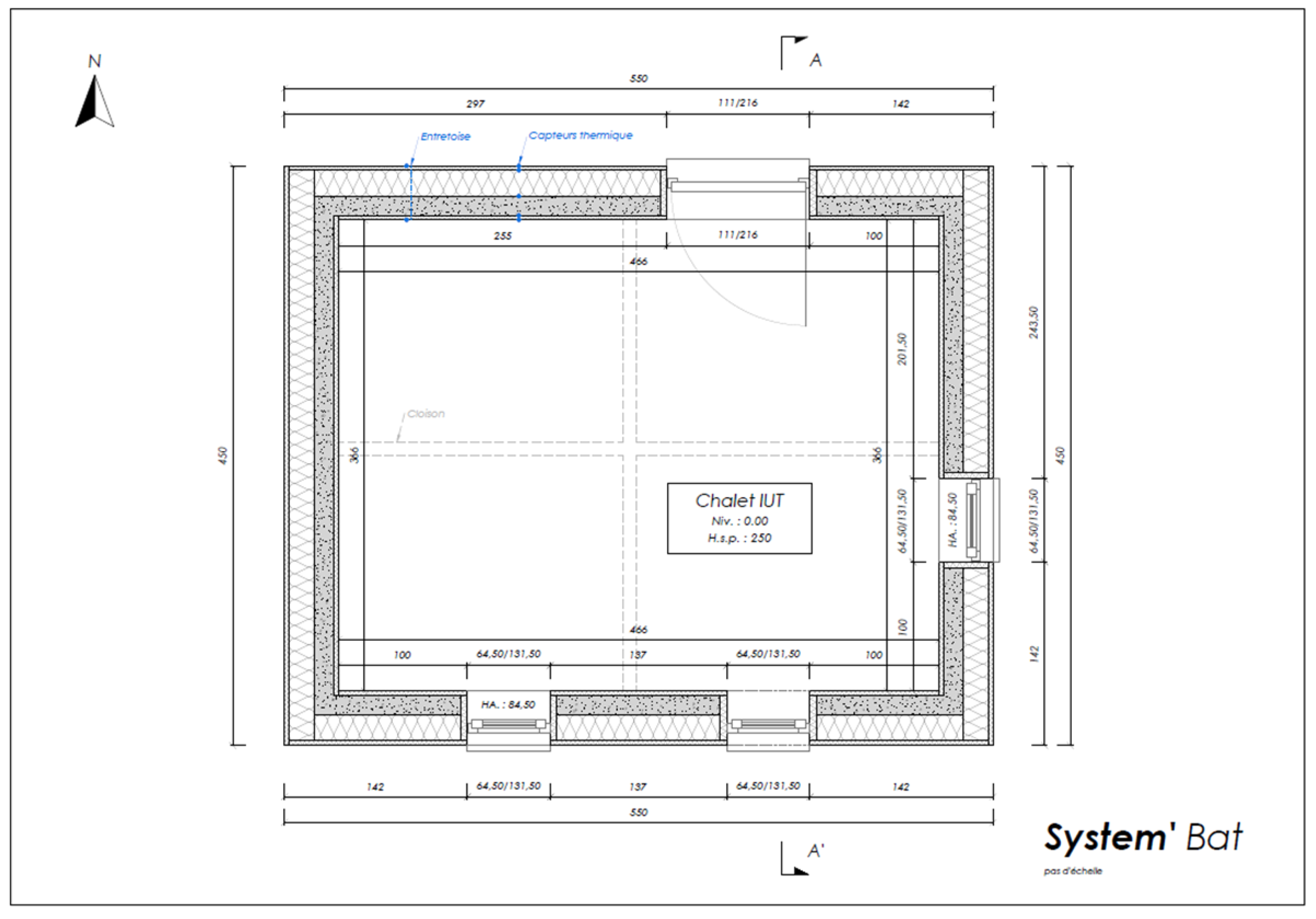
References
- Zhu, Q.; Xu, X.; Wang, J.; Xiao, F. Development of dynamic simplified thermal models of active pipe-embedded building envelopes using genetic algorithm. Int. J. Therm. Sci. 2014, 76, 258–272. [Google Scholar] [CrossRef]
- Soria-Verdugo, A.; Rubio-Rubio, M.; Goos, E.; Riedel, U. Combining the lumped capacitance method and the simplified distributed activation energy model to describe the pyrolysis of thermally small biomass particles. Energy Convers. Manag. 2018, 175, 164–172. [Google Scholar] [CrossRef]
- Belmonte, J.F.; Eguía, P.; Molina, A.E.; Almendros-Ibáñez, J.A.; Salgado, R. A simplified method for modeling the thermal performance of storage tanks containing PCMs. Appl. Therm. Eng. 2016, 95, 394–410. [Google Scholar] [CrossRef]
- Gao, X.; Liu, J.; Hu, R.; Akashi, Y.; Sumiyoshi, D. A simplified model for dynamic analysis of the indoor thermal environment of rooms with a Chinese kang. Build. Environ. 2017, 111, 265–278. [Google Scholar] [CrossRef]
- Al Assaad, D.; Habchi, C.; Ghali, K.; Ghaddar, N. Simplified model for thermal comfort, IAQ and energy savings in rooms conditioned by displacement ventilation aided with transient personalized ventilation. Energy Convers. Manag. 2018, 162, 203–217. [Google Scholar] [CrossRef]
- Fine, J.P.; Nguyen, H.V.; Friedman, J.; Leong, W.H.; Dworkin, S.B. A simplified ground thermal response model for analyzing solar-assisted ground source heat pump systems. Energy Convers. Manag. 2018, 165, 276–290. [Google Scholar] [CrossRef]
- Gao, J.; Yan, T.; Xu, T.; Ling, Z.; Wei, G.; Xu, X. Development and experiment validation of variable-resistance-variable-capacitance dynamic simplified thermal models for shape-stabilized phase change material slab. Appl. Therm. Eng. 2019, 146, 364–375. [Google Scholar] [CrossRef]
- Kharbouch, Y.; Ouhsaine, L.; Mimet, A.; El Ganaoui, M. Thermal performance investigation of a PCM-enhanced wall/roof in northern Morocco. Build. Simul. 2018, 11, 1083–1093. [Google Scholar] [CrossRef]
- Wei, T.-W.; Oprins, H.; Cherman, V.; Van der Plas, G.; De Wolf, I.; Beyne, E.; Baelmans, M. Experimental characterization and model validation of liquid jet impingement cooling using a high spatial resolution and programmable thermal test chip. Appl. Therm. Eng. 2019, 152, 308–318. [Google Scholar] [CrossRef]
- Habibi Khalaj, A.; Halgamuge, S.K. A Review on efficient thermal management of air- and liquid-cooled data centers: From chip to the cooling system. Appl. Energy 2017, 205, 1165–1188. [Google Scholar] [CrossRef]
- Bouguezzi, S.; Ayadi, M.; Ghariani, M. Developing a Simplified Analytical Thermal Model of Multi-chip Power Module. Microelectron. Reliab. 2016, 66, 64–77. [Google Scholar] [CrossRef]
- Deb, C.; Schlueter, A. Review of data-driven energy modelling techniques for building retrofit. Renew. Sustain. Energy Rev. 2021, 144, 110990. [Google Scholar] [CrossRef]
- Ritzberger, D.; Höflinger, J.; Du, Z.P.; Hametner, C.; Jakubek, S. Data-driven parameterization of polymer electrolyte membrane fuel cell models via simultaneous local linear structured state space identification. Int. J. Hydrogen Energy 2021, 46, 11878–11893. [Google Scholar] [CrossRef]
- Chau, T.T.T.; Ailliot, P.; Monbet, V. An algorithm for non-parametric estimation in state–space models. Comput. Stat. Data Anal. 2021, 153, 107062. [Google Scholar] [CrossRef]
- Wu, X.; He, H.; Chen, G. A new state-space method for exponentially damped linear systems. Comput. Struct. 2019, 212, 137–144. [Google Scholar] [CrossRef]
- Ouhsaine, L.; Ramenah, H.; El Ganaoui, M.; Mimet, A. Dynamic state-space model and performance analysis for solar active walls embedded phase change material. Sustain. Energy Grids Netw. 2020, 24, 100401. [Google Scholar] [CrossRef]
- Fateh, A.; Borelli, D.; Spoladore, A.; Devia, F. A State-Space Analysis of a Single Zone Building Considering Solar Radiation, Internal Radiation, and PCM Effects. Appl. Sci. 2019, 9, 832. [Google Scholar] [CrossRef]
- Qian, N.; Chang, G. Optimal filtering for state space model with time-integral measurements. Measurement 2021, 176, 109209. [Google Scholar] [CrossRef]
- Chen, X.; Wang, Q.; Srebric, J. A data-driven state-space model of indoor thermal sensation using occupant feedback for low-energy buildings. Energy Build. 2015, 91, 187–198. [Google Scholar] [CrossRef]
- Yao, Y.; Wang, W.; Huang, M. A state-space dynamic model for vapor compression refrigeration system based on moving-boundary formulation. Int. J. Refrig. 2015, 60, 174–189. [Google Scholar] [CrossRef]
- Morsli, S.; Boussoufi, M.; Sabeur, A.; El Ganaoui, M.; Bennacer, R. Small to large scale mixed turbulent convection: Buildings application. Int. J. Numer. Methods Heat Fluid Flow 2018, 28, 188–205. [Google Scholar] [CrossRef]
- Kircher, K.J.; Max Zhang, K. On the lumped capacitance approximation accuracy in RC network building models. Energy Build. 2015, 108, 454–462. [Google Scholar] [CrossRef]
- Mnasri, F.; Bahria, S.; Slimani, M.E.-A.; Lahoucine, O.; El Ganaoui, M. Building incorporated bio-based materials: Experimental and numerical study. J. Build. Eng. 2020, 28, 101088. [Google Scholar] [CrossRef]
- Li, M.; Khelifa, M.; El Ganaoui, M. Mechanical characterization of concrete containing wood shavings as aggregates. Int. J. Sustain. Built Environ. 2017, 6, 587–596. [Google Scholar] [CrossRef]
- Ramspeck, C.B.; Jakob, F.E.; Kennedy, S.D.; Knebel, D.E.; Kohloss, F.H.; McBride, M.F.; Modera, M.P.; Nasseri, C.H.; Shavit, G.; Tree, D.R.; et al. ASHRAE STANDARDS COMMITTEE 2003–2004. p. 77. Available online: https://www.google.com.hk/url?sa=t&rct=j&q=&esrc=s&source=web&cd=&ved=2ahUKEwiTqIXstqLwAhVhyYsBHTY-BucQFjAAegQIAxAD&url=http%3A%2F%2Fwww.ditar.cl%2Farchivos%2FNormas_ASHRAE%2FT0080ASHRAE-55-2004-ThermalEnviromCondiHO.pdf&usg=AOvVaw0frR3-OPQO-waPtde0g_w1 (accessed on 21 April 2021).
- EnergyPlus Testing with ANSI/ASHRAE Standard 140-2001 (BESTEST). 2004; p. 91. Available online: https://www.google.com.hk/url?sa=t&rct=j&q=&esrc=s&source=web&cd=&ved=2ahUKEwi8_6mtt6LwAhWiIaYKHbOuDXgQFjAAegQIAxAD&url=https%3A%2F%2Fsimulationresearch.lbl.gov%2Fdirpubs%2Fepl_bestest_ash.pdf&usg=AOvVaw3iq8s3M8QeBtRmd0OBbTJo (accessed on 21 April 2021).
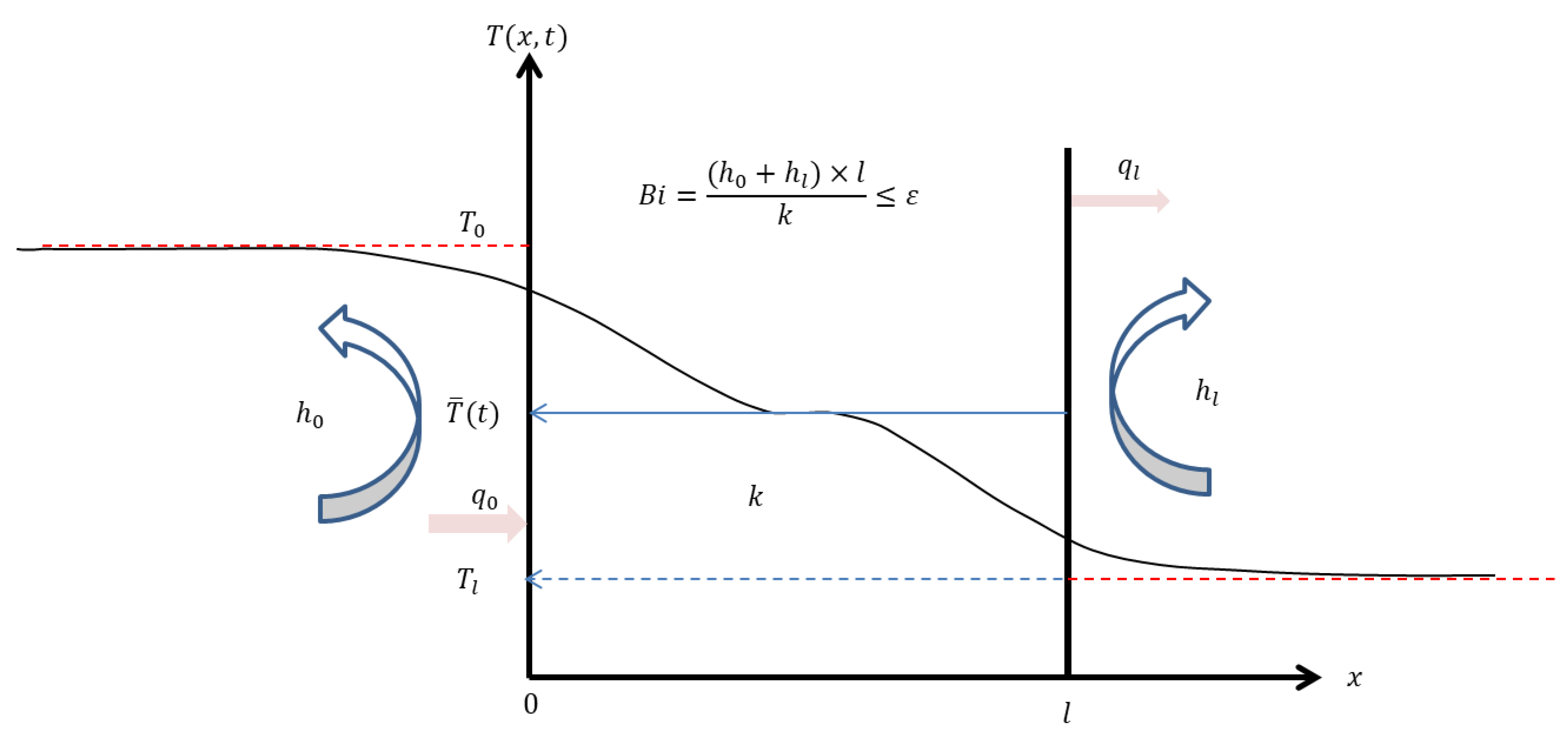



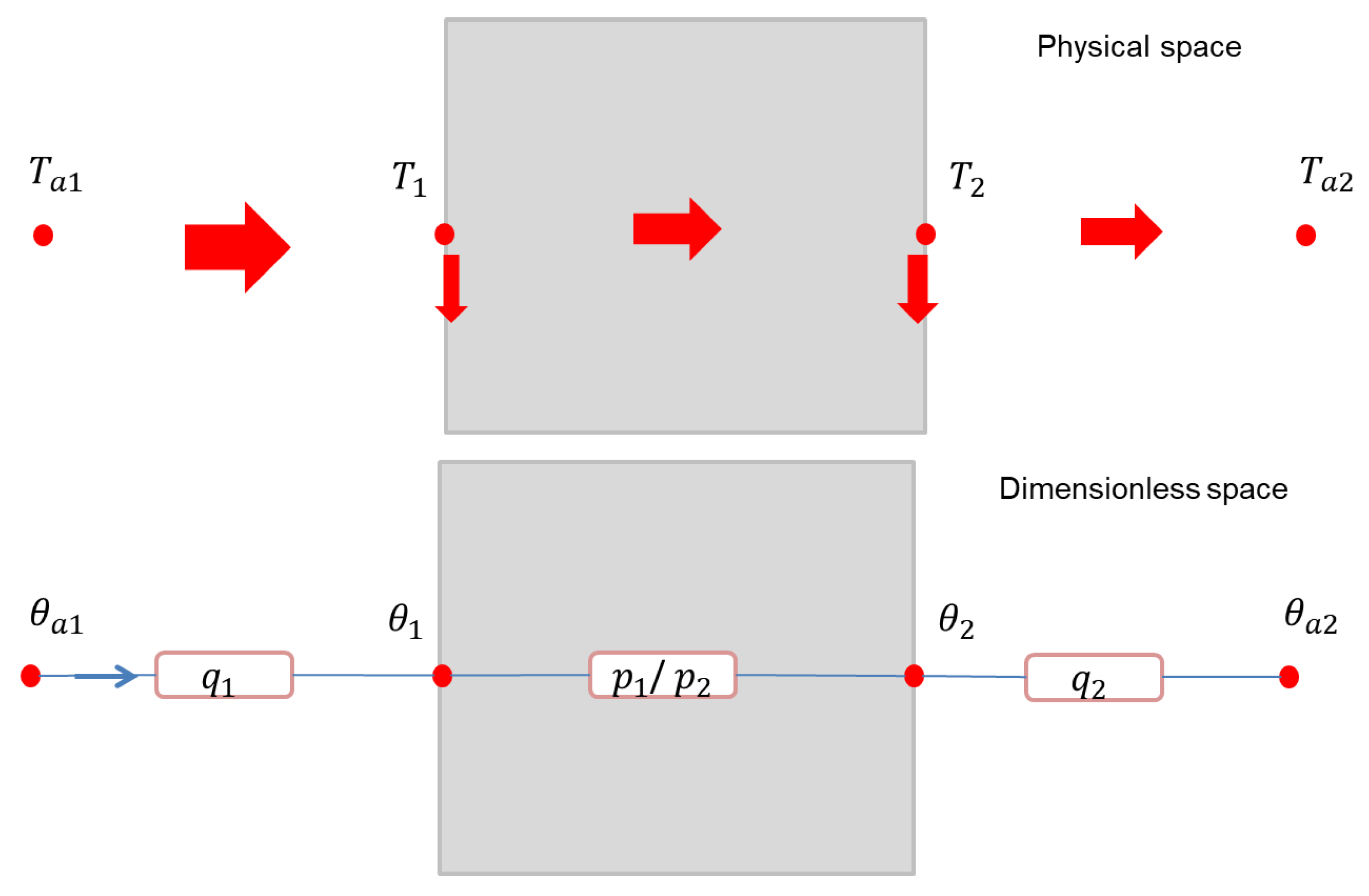

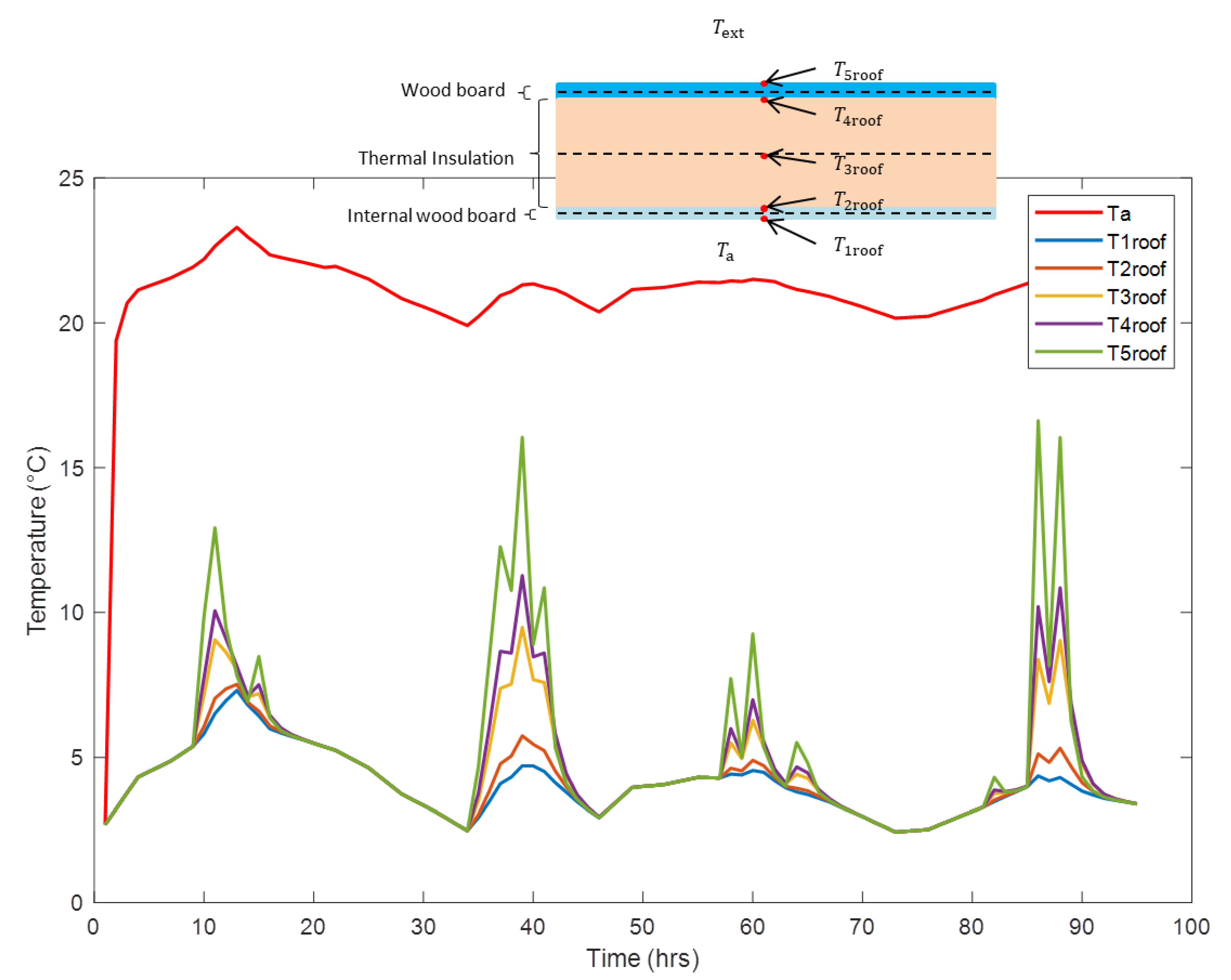


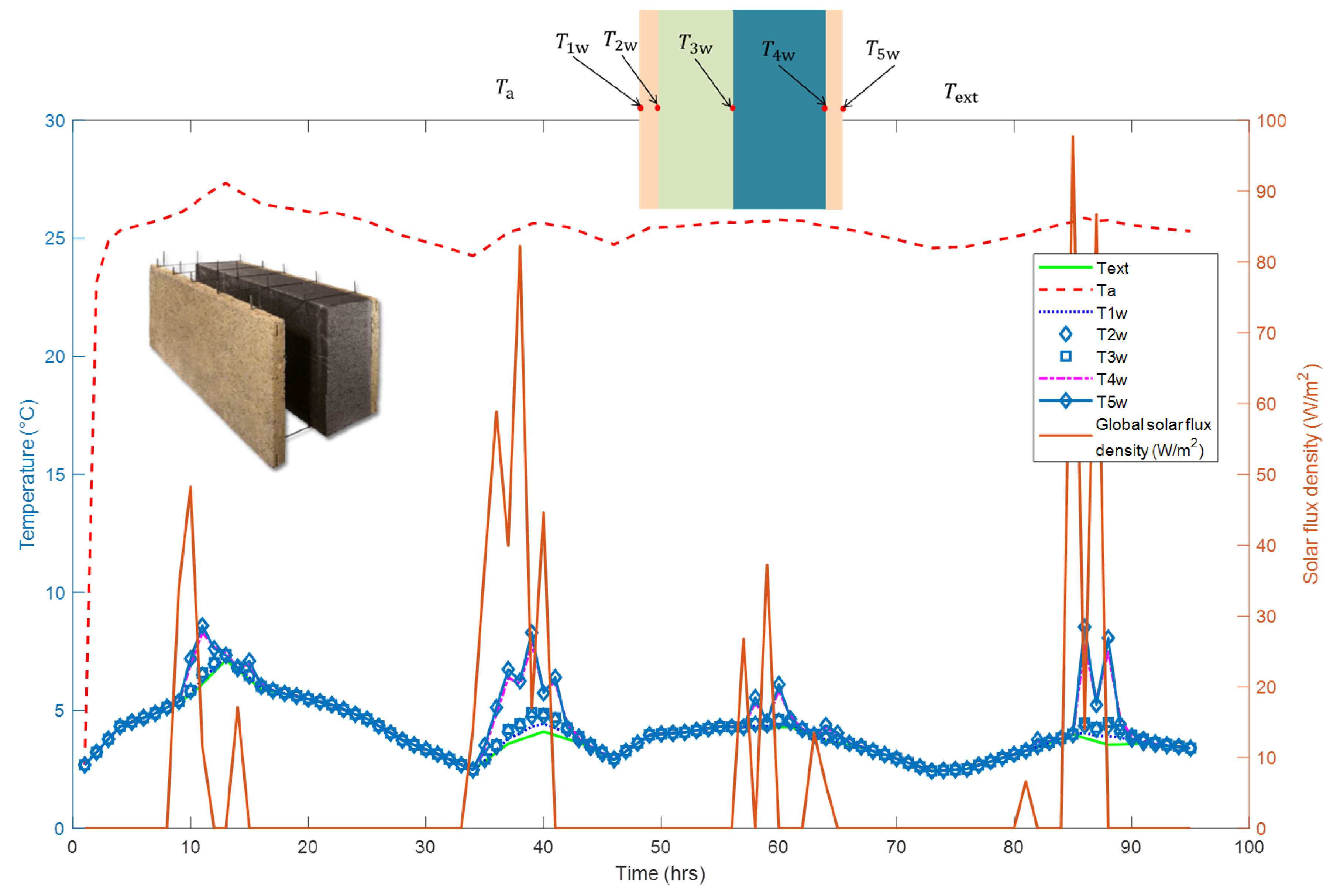
| Roof Layers | Windows | Door | Walls | Floor Layers | |
|---|---|---|---|---|---|
| - | - | ||||
| - | - | ||||
| - | - |
Publisher’s Note: MDPI stays neutral with regard to jurisdictional claims in published maps and institutional affiliations. |
© 2021 by the authors. Licensee MDPI, Basel, Switzerland. This article is an open access article distributed under the terms and conditions of the Creative Commons Attribution (CC BY) license (https://creativecommons.org/licenses/by/4.0/).
Share and Cite
Ouhsaine, L.; El Ganaoui, M.; Mimet, A.; Nunzi, J.-M. A Substitutive Coefficients Network for the Modelling of Thermal Systems: A Mono-Zone Building Case Study. Energies 2021, 14, 2551. https://doi.org/10.3390/en14092551
Ouhsaine L, El Ganaoui M, Mimet A, Nunzi J-M. A Substitutive Coefficients Network for the Modelling of Thermal Systems: A Mono-Zone Building Case Study. Energies. 2021; 14(9):2551. https://doi.org/10.3390/en14092551
Chicago/Turabian StyleOuhsaine, Lahoucine, Mohammed El Ganaoui, Abdelaziz Mimet, and Jean-Michel Nunzi. 2021. "A Substitutive Coefficients Network for the Modelling of Thermal Systems: A Mono-Zone Building Case Study" Energies 14, no. 9: 2551. https://doi.org/10.3390/en14092551
APA StyleOuhsaine, L., El Ganaoui, M., Mimet, A., & Nunzi, J.-M. (2021). A Substitutive Coefficients Network for the Modelling of Thermal Systems: A Mono-Zone Building Case Study. Energies, 14(9), 2551. https://doi.org/10.3390/en14092551










